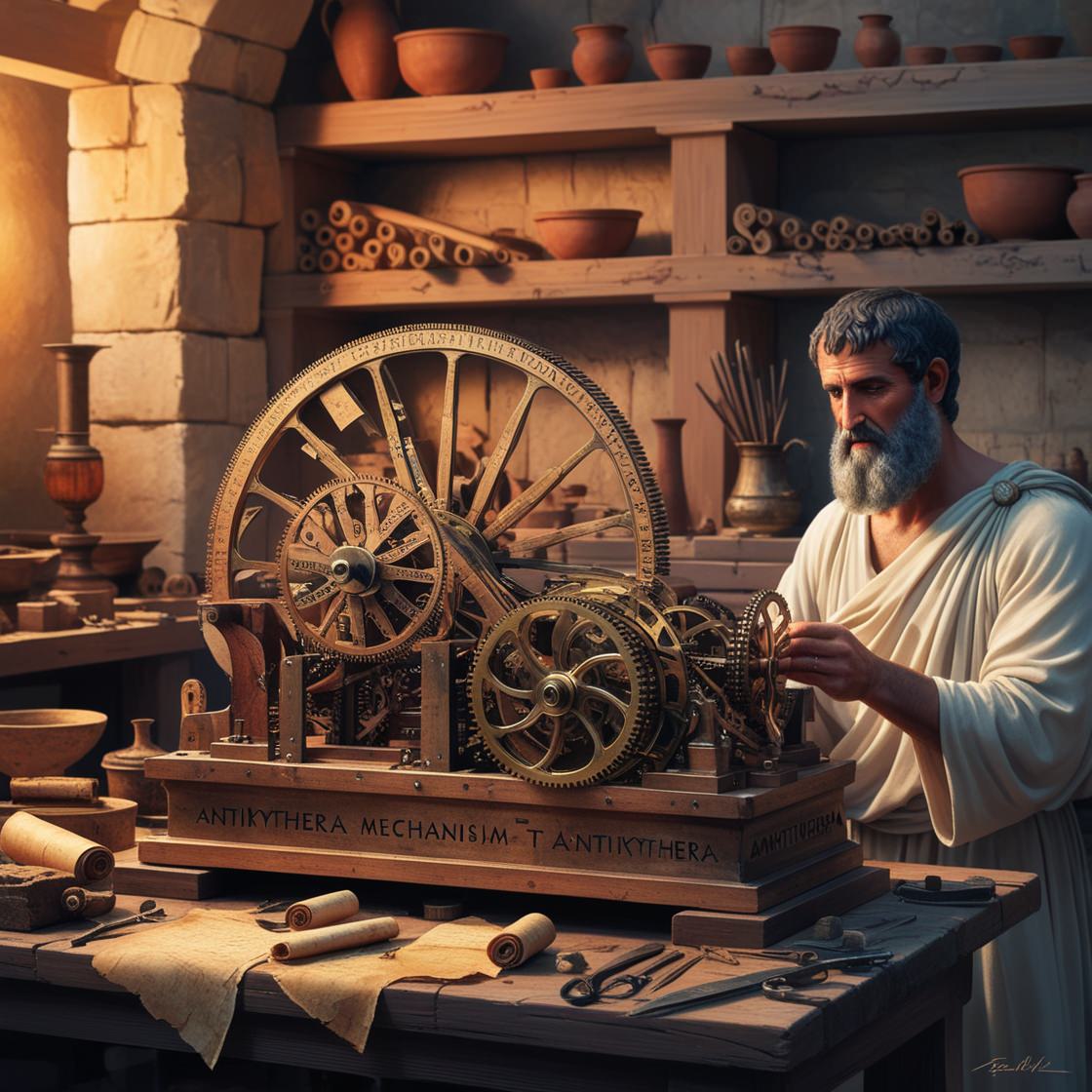In 1901, a team of Greek sponge divers made an astonishing discovery off the coast of the island of Antikythera. Among the treasures of a 2,000-year-old shipwreck, they found a complex and corroded mechanism that would come to be known as the Antikythera mechanism. This ancient device, dating back to around 100 BCE, has since fascinated historians and scientists, revealing the advanced technological capabilities of the ancient Greeks.
Decoding the Mechanism
The Antikythera mechanism was initially overlooked as just another piece of corroded bronze. However, further examination revealed a complex arrangement of gears and dials, unlike anything seen from the ancient world. The mechanism's true significance became apparent when scientists realized that it was designed to predict astronomical positions and eclipses decades in advance. Over the decades, researchers painstakingly pieced together the function and purpose of the Antikythera mechanism. X-ray imaging and 3D modeling have allowed scientists to reconstruct its intricate system of gears, revealing a sophistication comparable to 18th-century clockmaking. The mechanism was housed in a wooden case and operated by turning a hand-crank. This action moved various gears that corresponded to celestial cycles. The front dial displayed the zodiac and solar calendar, while the back dials tracked lunar cycles and predicted eclipses. The device could also model the irregular orbit of the moon, accounting for its variable speed as observed from Earth.
Legacy and Impact
The complexity of the Antikythera mechanism challenges the common perception of technological progress. It demonstrates that ancient civilizations possessed a deep understanding of mathematics, astronomy, and engineering far beyond what was previously assumed. The device's sophistication suggests that it was the product of a long tradition of craftsmanship and scientific knowledge. The Antikythera mechanism has had a profound impact on our understanding of ancient technology. It highlights the ingenuity and scientific achievements of the Hellenistic period, a time when Greek culture and knowledge spread across the Mediterranean and beyond. Today, the Antikythera mechanism continues to inspire and intrigue. Modern engineers and scientists marvel at its design, and it has spurred renewed interest in the study of ancient technologies. Exhibits and documentaries about the mechanism draw large audiences, eager to learn about this ancient marvel.
